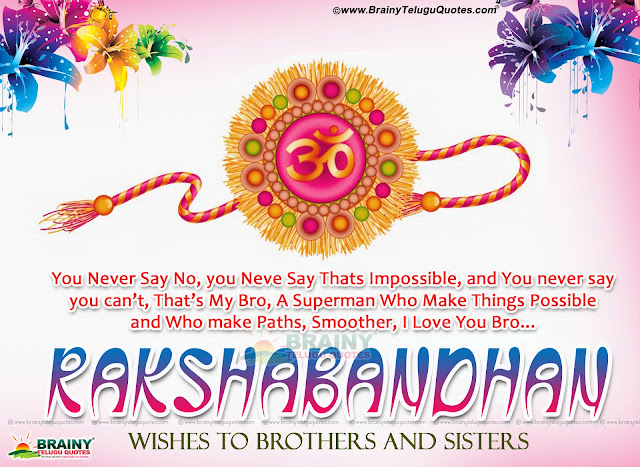Avani Avittam / Upakramam
Avani Avittam or Upakramam or Avani Attam is a ritual followed by the Brahmins who read Yajurveda. It is most commonly celebrated in southern states of Tamil Nadu and Kerela, and states of Orissa and Maharashtra. It falls on the Shravan Purnima that is the same day as Raksha Bandhan.
Avani Avittam Rituals
On this day, a Mahasankalpam or a vow is taken for atonement of all our sins in the past year. The Brahmins take a holy dip and wear a new holy thread called Yajnopavit or Janeyu.
The first step is a 'prayashchita', A prayer to atone the sins. It says, "For the removal of all my sins and thereby to secure a divine blessing and for qualifing myself to perform the essential duties of Brahmanas as prescribed in the vedas and smritis and adopted by the really good in their conduct I put on this Yagnopavita".
When the thread is worn another mantra is recited which means -"I put on the sacred thread which is highly pure, is inseparable from God, is capable of prolonging life and is the foremost in the accomplishment of a Brahmana. May such pure Yagnopavita bring strength and dignity.
While removing the old thread, the mantra means -"I throw away the broken dirty old thread, may the new one bring on long life and Brahmana's brilliance.
Avani Avittam Significance
Upakramam means the beginning. On this day the Yajurvedis begin to read Yajur Veda for next six months. The day is auspicious because as per Indian mythology Lord Vishnu was incarnated as Lord Hayagriva,the lord of knowledge, the one who restored the Vedas to Brahma.
Kajari Purnima:
Kajari Purnima Falls on the same day as Raksha Bandhan that is on the Shravan Purnima. This festival is mainly celebrated in the Central India that includes Madhya Pradesh, Chattisgarh and part of Uttar Pradesh. Since this festival falls at the end of the monsoon season, it is of great importance to the farmers.
On the ninth day after Shravana Amavasya, the preparations of the kajari festival start. This ninth day is called Kajari Navami. The rituals are performed by the ladies blessed with a son. The rituals continye till the Kajri Purnima or the full moon day.
On the Shravan Shukla Navami, women go to fields and bring earth in the leaf cups. Leaf or barley is sown in it and kept in a dark room where no sunlight or fresh air reaches. The place where this leaf cup is kept and the surrounding walls are cleaned and washed with mud and cow dung. The place then is decorated patterns made by rice solution.The motifs are generally the house hold articles and activities. Figures of a house, a child in cradle, a mongoose and a woman with a pitcher are mandatory figures. This art of drawing with the rice solution on mud washed floor is called Navami. And then the cup is worshiped.
The worship is repeated fot seven days till the full moon day. The evening of the full moon day has the final ritual. The women move out in procession carrying the leaf cups on their heads. They carry it to a pond or any other water body and immerse it. Women keep fast on this day and pray for the well being of their sons.
The festival is of importance to the farmers as it signifies the beginning of the sowing season for wheat and barley. They worship Godess Bagwati and seek blessings for a good crop.
Narial Purnima
This festival is important for those who depend on sea for their life.On this day the Sea God, Varun is worshiped.The coconuts are offered to the Sea God thus the name Narial purnima or the coconut full moon.
It is the time of retreating monsoon. The skies are clearing, the tides are receding, the sea is less violent. It is the festival time for the people of the coastal areas. The people offer coconut to Lord Varun to invoke blessings and offer thanks giving.
For the fishermen is is the beginning of the new fishing season. During the monsoon the seas are more violent. The fishermen don't wade into seas during this time. Shravan Purnima signifies the end of Monsoon. The Fishermen decorate their boats, paint it new and put flags. They then carry decorated coconuts to the sea. It is kind of a community gathering there. They celebrate together, sing and dance together. In the end they worship the Sea God and offer coconut. The decorated coconuts are thrown in the water with prayers of a plentiful fish catch.
Why Coconut?
A coconut has three eyes. It is said to represent Lord Shiva, the three eyed God. Coconut is considered to be an auspicious offering to Gods. A coconut is broken in front of the deities before taking up a new venture to seek blessings and on successful comlition for thanks giving. Coconut is important for all religious occasions. Thus coconut is considered to be an ideal offering to the Sea God as well.
Pieces of coconut and coconut are distributed as 'prasad'. Coconut rice is the main dish on this day.
Pavitropana
Pavitropana is a festival of Gujaratis. It is celebrated on the very same day of Rakhi Purnima and falls in the month of Shravana. According to the legends, Gujaratis are the staunch believers of religion and generally they worship lord Shiva. On this auspicious day, most of the people offer water to the Shivalingas in the nearby temples, offer prayers to Lord Shiva and seek his blessings. It is believed that whoever, prays on this auspicious day, all his past sins are forgiven.
History of Pavitropana
This festival has also been referred to as Putrada Ekadashi in Bhavishya Purana. In this Purana, Lord Krishna has narrated the story of how the Ekadashi in the month of Shravana came to be sacred. He states,“At the dawn of Dvarpara-yuga there lived a king by the name of Mahijita, who ruled the kingdom of Mahismati-puri. Since he had no son, his entire kingdom seemed utterly cheerless to him. “A married man who has no son gains no happiness in this life or the next.” The King tried hard to beget children and continue his lineage. But it seemed that lady luck had turned against the king. As years progressed, he became anxious and called for an assembly of advisors. He told that he had never committed any sin or did anything wrong to anyone. Yet the Gods have not blessed him and the kingdom with a son. He asked everyone to find out the reason for this.
Rituals followed on Pavitropana
The Ceremony of Pavitropana involves Pavitras, a few filaments of cotton and sometimes kasa grass which are closely entwined, knotted together and soaked in a mixture of Panchgaivya (cow's ghee, milk, curd, urine and excreta).
Pavitropana or the Shravana Purnima is considered as an auspicious day for the final poojan of the three eyed God. In the Pavitropana ceremony, a few twisted filaments of cotton are soaked in panchagaivya (mixture of cow's ghee, milk, curd, urine and excreta) and then fastened around the Shivalinga. Panchagaivya or the five products obtained from cow which is the most sacred animal according to the Hindu mythology.
 |

















Post a Comment
Note: only a member of this blog may post a comment.